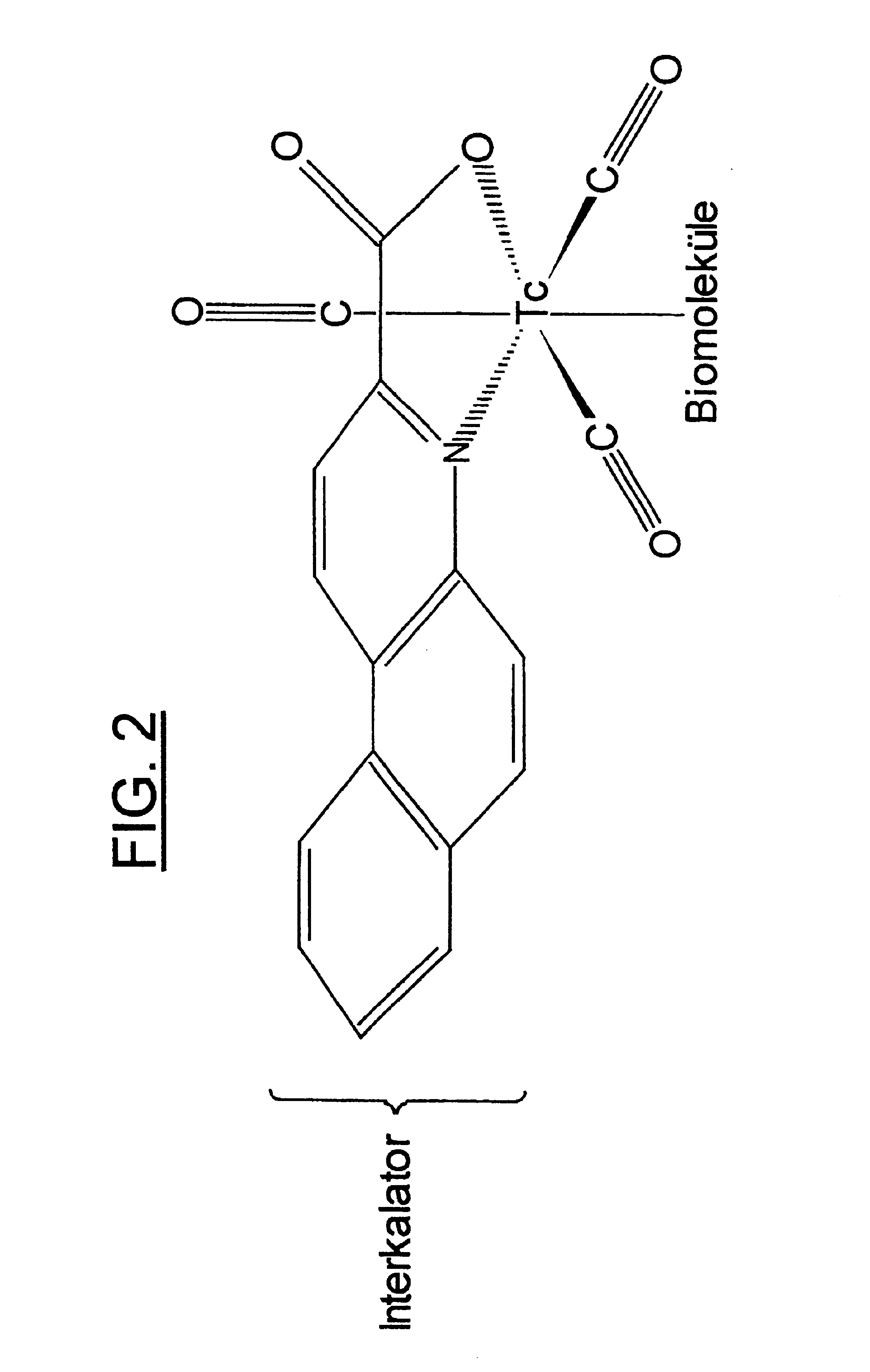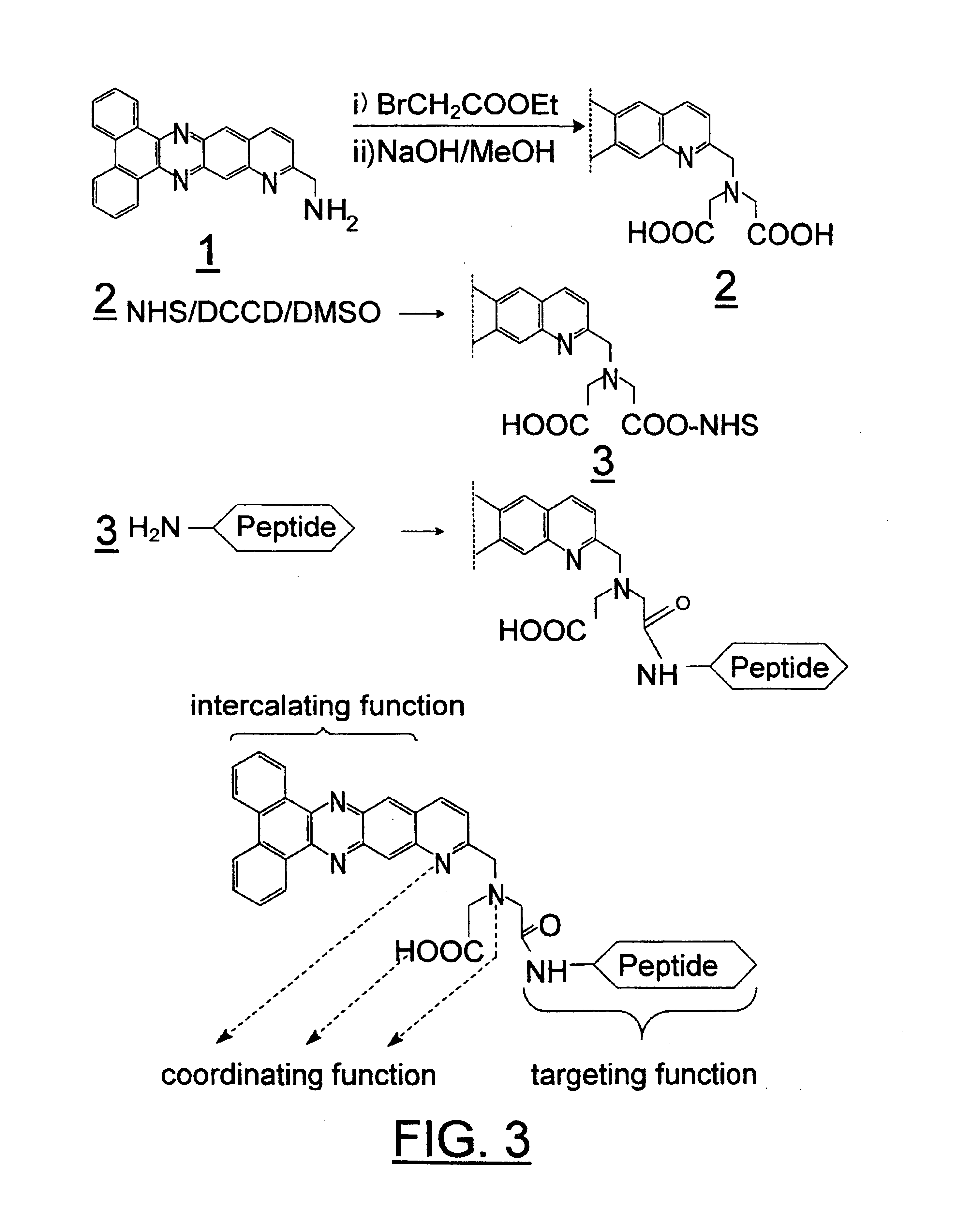Combination of intercalating organometallic complexes and tumor seeking biomolecules for DNA cleavage and radiotherapy
a technology of tumors and biomolecules, which is applied in the direction of immunoglobulins, peptides, drug compositions, etc., can solve the problems of dna strand breaking, and achieve the effect of avoiding severe side effects such as bone marrow toxicity
- Summary
- Abstract
- Description
- Claims
- Application Information
AI Technical Summary
Benefits of technology
Problems solved by technology
Method used
Image
Examples
example 1
Synthesis of the Molecules of the Invention
1. Introduction
To provide a strong intercalation, the intercalator should be preferably planar and aromatic heterocyclic. Furthermore, pendant groups in the intercalator must stably be coordinated to the radionuclide (i.e. 99mTc). In this example, it is not coercive that the coordinating unit must be a multidentate ligand with high thermodynamic stability, since most complexes with Tc(I) show an extremely high kinetic stability. For these reasons and due to the already known principles of complexation of several mono- and bidentate ligands (especially picolinic acid) 5,6-benzochinolin-3-carboxylic acid was selected as intercalator.
FIG. 2 depicts an example of a Tc(I) complex with this intercalating ligand and a potential biomolecule attached by direct linkage to another coordination site.
2. Synthesis of the Example Intercalator
2.1. 3-cyano-4-benzoyl-3,4-dihydrobenzo(f)chinoline 2
648 μl (5.58 mmol) benzoyl chloride was added to a two phase s...
example 2
Strand Breaking with the Molecules of the Invention in a Model System
1. Introduction
1.1 The Use of Plasmids
To investigate the ability of the intercalating complexes with 99mTc to induce DNA-strandbreaks, plasmids were used as a model system. Plasmids are very suitable because electrophoretic analyses allow to differentiate between double and single strand breaks. Additionally, large quantities of plasmids can be produced very simply by using cell biological methods.
A plasmid is a circular double-stranded DNA molecule, which double helical axis can be drilled into a superhelix. This form of the superhelix is described as type I. This type may loose its superhelix-structure by a single strandbreak and is then present as a relaxed circular DNA (type II). Through a double strandbreak of both types a linear from (type III) of the plasmid will be created. FIG. 4 shows an example of the structure of these 3 DNA types.
Because these three DNA types have different structures, they may well be...
PUM
| Property | Measurement | Unit |
|---|---|---|
| temperature | aaaaa | aaaaa |
| temperature | aaaaa | aaaaa |
| binding affinity | aaaaa | aaaaa |
Abstract
Description
Claims
Application Information
 Login to View More
Login to View More - R&D
- Intellectual Property
- Life Sciences
- Materials
- Tech Scout
- Unparalleled Data Quality
- Higher Quality Content
- 60% Fewer Hallucinations
Browse by: Latest US Patents, China's latest patents, Technical Efficacy Thesaurus, Application Domain, Technology Topic, Popular Technical Reports.
© 2025 PatSnap. All rights reserved.Legal|Privacy policy|Modern Slavery Act Transparency Statement|Sitemap|About US| Contact US: help@patsnap.com



